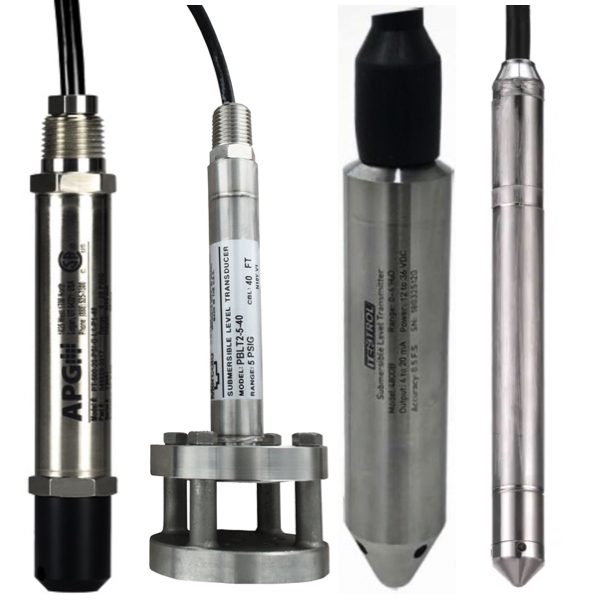Submersible Level Transmitters

Level transmitters that are submersible are designed for precision and dependability in the measurement of levels in applications that involve water tanks, oil tanks, pits and systems dedicated to wastewater. These transmitters are specifically constructed to endure being in a liquid, and they afford the consistent monitoring of levels in even the most challenging environments, including those that are hazardous. Fitted with sensors that measure the hydrostatic pressure of liquids, submersible level transmitters take the direct readings of the level that is then converted into an output signal that determines the level of that liquid. These devices are commonly found in wells, water tanks, and industrial sumps, and they operate safely and accurately in a range of applications.
Liquid level transmitters of the submersible sort find jobs in many industries that require the continuous monitoring and control of liquid levels. They connect to control systems as easily as any other liquid level transmitter. If we really want to make a case for the installation of submersible level transmitters, we could mention the mounting accessories that come with them, the brackets, and hangers that allow the operator to hang the cable in a convenient way. And then there's the issue of price: submersible level transmitters are, generally speaking, some of the more affordable level transmitters out there. And like most low-cost devices, they also have most of the good qualities that one would want in a level measurement device: they are reliable, they are accurate, and they are somewhat versatile.
More Information about Submersible Level Transmitters
In hazardous locations, submersible level transmitters can be obtained with intrinsically safe approval. This ensures that they can operate safely in conditions where flammable gases or liquids may be present. These transmitters are highly accurate and very stable over the long term, making them essential for monitoring levels continuously in applications like oil storage, well water measurement, and tank monitoring. The small diameter and robust design of the transmitters means they can be used effectively in both confined and open spaces and that they are reliable with a very low maintenance need for measuring the levels of liquids.
FAQs
Are submersible pressure transducers and submersible pressure transmitters the same as submersible level transmitters?
Yes, submersible pressure transducers and submersible pressure transmitters are essentially the same as submersible level transmitters, as they all measure liquid levels by detecting pressure changes exerted by the liquid column above the sensor and converting it into an electrical signal for monitoring.
Can submersible level transmitters be counted on to provide electrical protection and accuracy when suspended in a body of water?
Yes, submersible level transmitters can be counted on to provide electrical protection and accuracy when suspended in a body of water, as they are designed with robust materials and intrinsically safe approval for reliable performance in such environments.
Transmitters vs Transducers
Some of the most common types of transmitters and transducers can be found on pressure instruments. Examples of these include: drop-in well pressure devices and devices that measure the pressure in a pipe or gas chamber. Transmitters and transducers can also be found on flow and speed measurement devices.
What is the difference between transmitters and transducers?
The main difference is the way they send data to the monitoring device, like a PLC. In terms of measurement, the transmitter will reference a measuring unit by sending a milliamp signal (such as 4-20 mA). A transducer will reference a measuring unit by sending a voltage signal, typically in volts or millivolts.
Why have the two different types of transmission methods?
The method will depend on the application. If the electrical connection in the application travels a short distance, a pressure transducer is the better choice. Pressure transducers are smaller with fewer active electronic components that can be upset by electromagnetic interference. Also, the voltage signals transmitted over longer distances are subject to voltage drop and signal corruption. A transmitter is better for transmitting signals over a long distance.

